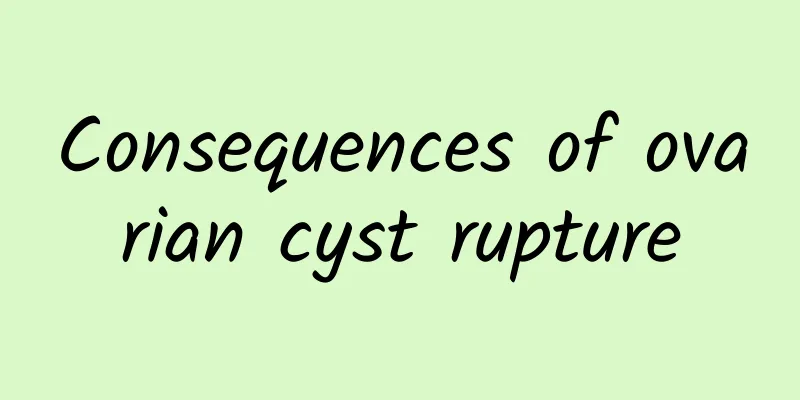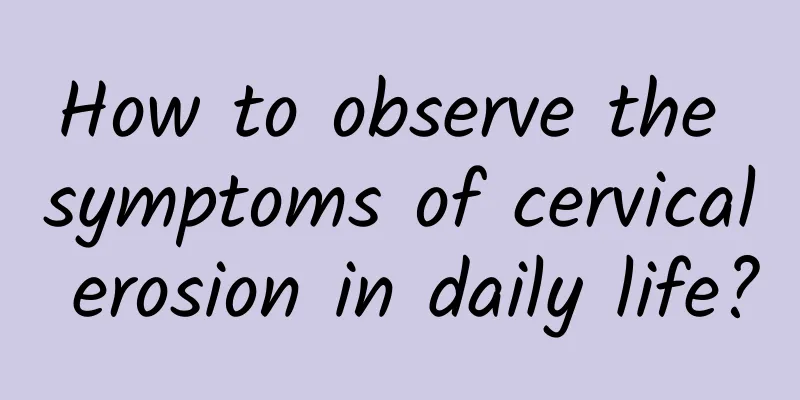Is it right to eat cheese, yogurt and miso? Nutritionist You Weiming reveals: 4 reasons why you must eat fermented foods

|
Cheese and yogurt are delicacies on the tables of Europeans and Americans; miso and pickles are favorites of the Japanese; and pickles and fermented bean curd are must-have teas for Chinese people's breakfast porridge. In fact, these foods all belong to the "fermented food" family. As people become more aware of healthy eating, fermented foods have gradually jumped from supporting roles to popular protagonists in daily life. Nutritionist You Weiming analyzed that the charm of fermented foods lies in their increased nutritional value, their ability to promote gastrointestinal digestion and absorption, and their ability to stimulate appetite. On the tables of Europeans and Americans, cheese and yogurt are indispensable to enhance the flavor. Miso and pickles are the soul of Japanese side dishes. Even Chinese people love to drink porridge for breakfast, which must be accompanied by pickles and fermented bean curd. Fermented foods are fermented using good bacteriaNutritionist You Weiming said that modern people’s demand for food is no longer as simple as just eating enough, but to give food functional effects. They hope that the functional effects of food can bring benefits and make the body healthier. Fermented food is a food processing technology with a long history, which uses "natural ingredients" and "good bacteria in nature" for fermentation processing. In fact, no matter which country the fermented food comes from, the production principles are basically the same. It mainly uses microorganisms including lactic acid bacteria, yeast, acetic acid bacteria, koji, etc. to decompose and metabolize the raw materials to produce nutrients that are beneficial to the body. Nutritionists analyze that the appeal of fermented foods lies in their increased nutritional value, their ability to promote gastrointestinal digestion and absorption, and their ability to stimulate appetite. 4 characteristics of fermented foodsAfter fermentation, food has the following four characteristics: 1. Special flavor and taste In Western cuisine, red wine and baked cheese can bring special flavors when paired with different foods, while fermented tofu, Taiwanese kimchi, and yogurt have a special taste. 2. Beneficial to human health Fermented foods such as Taiwan's red yeast rice soy sauce, Japan's natto and green tea, South Korea's kimchi, and Italy's Parmesan cheese can help prevent cardiovascular disease, enhance immunity, and promote gastrointestinal digestion and absorption. 3. Improved nutritional value After fermentation, microorganisms and their metabolites have special nutritional value, such as monacolin K, nattokinase, lactic acid bacteria, and catechins. 4. Promotes Appetite For example, the aroma and taste of fermented foods such as grain vinegar, fruit vinegar, soy sauce, miso, and fish sauce can make the brain produce the desire to eat and the secretion of saliva. The aroma and taste of fermented foods such as grain vinegar, fruit vinegar, soy sauce, miso, and fish sauce can make the brain produce the desire to eat and the secretion of saliva. 6 major categories of fermented foodsNutritionist You Weiming said that all kinds of natural ingredients can be used as raw materials for fermented foods. The difference lies in the flavor and nutritional value after fermentation, and whether they can be accepted by the market. Common fermented foods on the market include: 1. Fermented cereal foods: rice wine, beer, rice vinegar, miso, natto, sweet rice wine, etc. 2. Fermented vegetable foods: kimchi, pickles, pickles, pickles, etc. 3. Fermented fruit foods: red wine, fruit vinegar, fruit enzymes, etc. 4. Fermented beverages: lactic acid beverages, fermented tea beverages, etc. 5. Fermented foods as seasonings: soy sauce, bean paste, fish sauce, black vinegar, shrimp paste, fermented black beans, etc. 6. Protein fermented foods: yogurt, cheese, yogurt, stinky tofu, fermented tofu, etc. Nutritionist You Weiming recommends consuming a variety of fermented foods in moderation every day, such as yogurt, green tea, fruit vinegar, miso, kimchi, fermented tofu, etc., so that people can get delicious food and consume nutrients that are good for their health. 👉Recommended reading: Miso soup is high in salt, could it cause high blood pressure? Study: Eating a bowl of miso soup a day has unexpected benefits Beware of bacterial contamination when making homemade fermented foodsIt should be noted that many people like to make simple fermented foods at home, using processing methods such as temperature control (refrigeration or heating), pickling and dehydration, and sterilization to inhibit the growth of putrefactive bacteria and successfully make fermented foods. The most common ones are kimchi, yogurt, fruit enzymes, fruit wine, sweet rice wine, etc. However, the biggest concern about homemade fermented foods is contamination by spoilage bacteria. Therefore, environmental and personal hygiene are very important during the production of fermented foods. In addition, during the fermentation process, fermentation microorganisms will use the nutrients in the food to produce gases and metabolites. Therefore, some space must be reserved to facilitate fermentation. At the same time, attention should be paid to the changes in fermented foods during fermentation. If there is an abnormal odor, mucus, or color, it may mean that it has been contaminated and should be discarded immediately and should not be eaten. The biggest concern when making homemade fermented foods is contamination by spoilage bacteria. Therefore, environmental and personal hygiene are very important when making fermented foods. Choose the right fermented food according to your personal needsFermented foods have many functions. Nutritionist You Weiming recommends that you can consume fermented foods that are suitable for you according to your personal needs at the time. For example, when you have a cold, you can eat yogurt to supplement nutrition and physical strength; when you have a poor appetite, you can use shrimp paste to stimulate appetite; when you have difficulty defecating, you can drink fruit enzymes to promote intestinal peristalsis. As long as you consume fermented foods in moderation according to your physical condition, it is very suitable to consume them at any time. As for various fermented foods, there are also the most suitable ways to eat them, such as: sweet wine and red bean dumplings, wild vegetable and tofu miso soup, shochu chicken, barbecued pork and kimchi, rice soaked in senmai soup, pickled vegetable and sweet potato porridge, beef stewed in red wine, fruit yogurt salad, etc., are all representative classic delicacies. People can also combine fermented foods according to their preferences to make the food more delicious. If you are unable to fully consume whole fermented foods, you can now choose portable enzymes that combine vegetables, fruits, probiotics, and plant enzyme essences to aid digestion and facilitate bowel movements. When purchasing fermented foods, you need to be aware that some fermented products may contain excessive amounts of sugar, salt, artificial flavors and food additives. When consuming, you must pay attention to the contents and ingredients on the food label. Common myths about fermented foods: Does bubbling and mold growth mean they are spoiled?Some people mistakenly believe that food that is bubbling or growing mold has gone bad? In fact, common fermented foods have been consumed by humans for hundreds of years and should not pose any health risks. For example, natto has a unique smell and mucus, stinky tofu soaked in turbid fermented liquid, and moldy and hairy cheese. These fermented foods may seem inedible on the outside, but they actually taste quite delicious and contain nutrients that are beneficial to the body. Various fermented foods have different fermentation phenomena. For example, during the fermentation process of yogurt, the liquid will become uniformly thick, milky white in appearance with a faint lactic acid aroma. If the yogurt appears green or black, it means it is contaminated by spoilage bacteria and can no longer be eaten. Therefore, when making or eating fermented foods, you should first understand the normal changes in fermented foods during the fermentation process to avoid eating fermented foods contaminated by spoilage bacteria. The unique smell and mucus of natto, the stinky tofu soaked in turbid fermented liquid, the moldy and hairy cheese, etc. These fermented foods may seem inedible on the outside, but in fact they taste quite delicious and contain nutrients that are beneficial to the body. [Nutritionist's Tips]: Most people believe that common fermented foods are safe and beneficial, so they eat them with confidence. In fact, some fermented foods are pickled with sugar and salt, so patients with hypertension must be careful when eating them. Patients who are prone to bloating from soy products should avoid natto fermented products. Yeast fermented products with high phosphorus content are also not suitable for kidney patients. 👉Recommended reading: Can eating natto, miso, and tofu prevent aging and reduce the risk of stroke? The answer is… |
Recommend
What are the hazards of cervical erosion in women? Some hazards of cervical erosion in women should be noted
Cervical erosion is a very common gynecological d...
Why is the menstrual flow less after abortion?
After a woman has an abortion, the first menstrua...
Don’t stigmatize fat! Eating smart can help reduce inflammation and help lose weight
Fat, fiber, and protein, with a little spice on t...
Are uterine fibroids life-threatening?
Are uterine fibroids life-threatening? Uterine fi...
What are the treatments for functional uterine bleeding?
What are the treatments for functional uterine bl...
What are the causes of ovarian cysts in pregnant women?
Ovarian tumors are common tumor diseases of the f...
"Spring stepmother noodles" are prone to illness, nutritionists teach "7 major nutrients" to improve immunity!
As the saying goes, "Spring is like the seas...
Can you get pregnant with chocolate ovarian cysts? What are the characteristics?
Can you get pregnant with chocolate ovarian cysts...
Why does Bartholinitis keep recurring?
The Bartholin's glands are located at the bac...
What symptoms will women experience when uterine fibroids appear?
Uterine fibroids are also a gynecological disease...
A must-read for weight loss! How to eat sugar to lose weight?
"Is sugar a carbohydrate?" a friend ask...
How to prevent acute pelvic inflammatory disease?
Acute pelvic inflammatory disease is becoming mor...
Treatment of wind-cold arthralgia syndrome after abortion
Artificial abortion, also known as induced aborti...
How thick does the uterine wall need to be to have menstruation? What should I do if the uterine wall is too thick and the menstruation is too heavy?
Generally, menstruation will occur when the uteri...
Ovarian cysts can cause endocrine disorders
The good wife and mother turned into a fierce wom...









